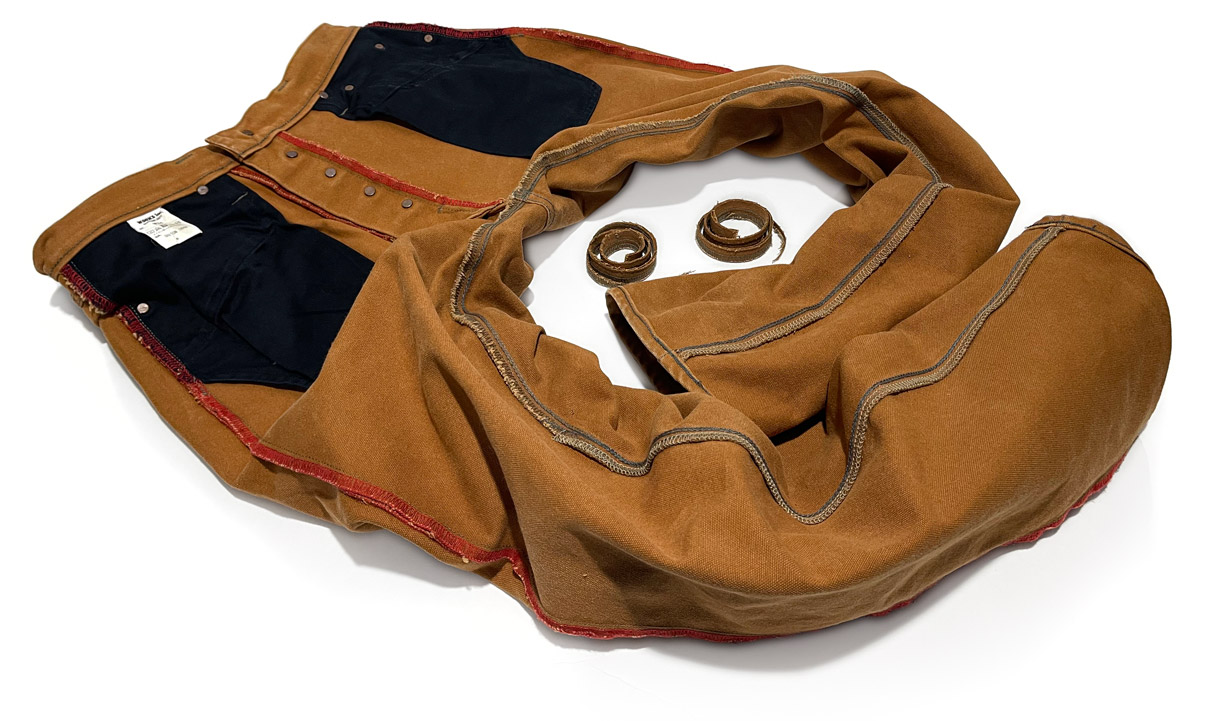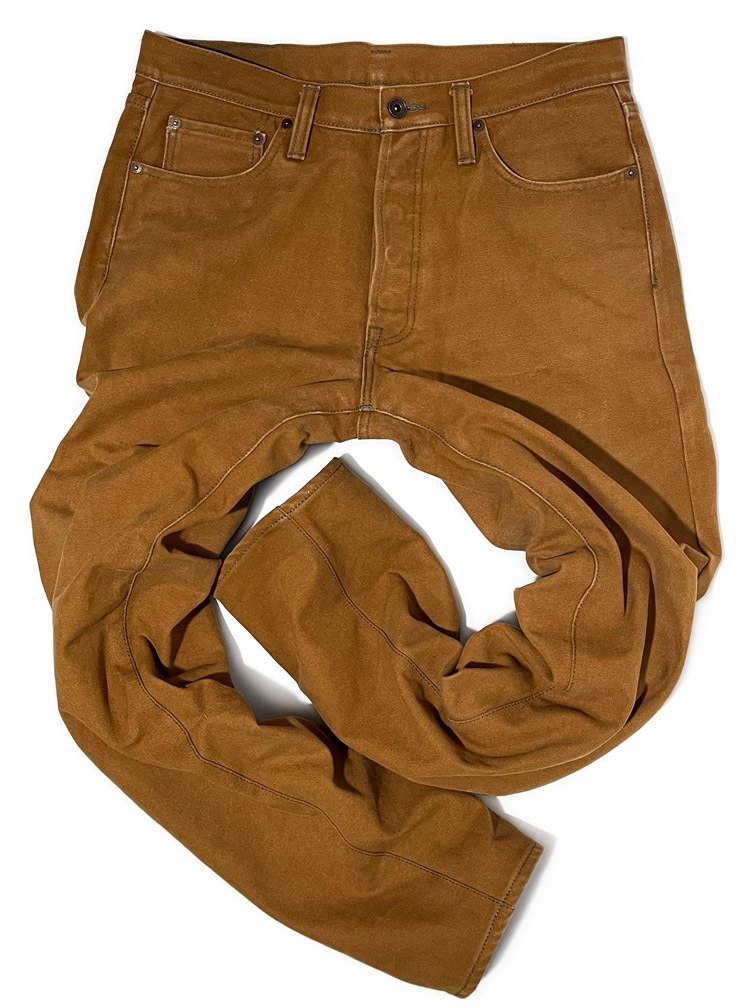How we expertly tapered Iron Heart jeans starting from the 888 fit

By Maurice Malone Published November 19, 2021
Believe it or not, tapering this pair of pants is one of the easiest routine tailoring jobs we perform. The owner of this pair of tan tapered Iron Heart jeans felt the brand's 888 fit was not quite tapered enough and sent them to us to be perfected with a 15-inch (7.5 half circumference) leg opening.
It doesn't matter if jeans or pants have selvedge or not – unless the style has a bell or flared opening, we taper them from the inseam where the leg is shaped. The top reasons other tailors or alterations shops will taper from the outseams, despite the fact it will produce a flawed, wide selvedge or overlocked busted seams are as follow:
1. Limitations with equipment
2. Don't understand garment construction
3. Easier for them to sew, despite creating a flawed outseam
We taper jeans and pants with a single topstitch inseam and those constructed with overlock sewing very differently from the way we would do it if constructed with a double-needle lap seam.

If the pants need to be also be shortened, we start by cutting the inseam length slightly longer than required. Next, we remove the topstitching, if any. With the pants turned inside out, press the inseam flat for smooth, flat editing.
Each leg is then measured from the outseam, towards the inseam and marked to the requested leg specs. The center point of the knees is located (if reducing knee to a specified measurement), and the reduction is marked.
If pants are tapered to the knee, we draw a straight line that smoothly blends into the seam line from the bottom opening (at least 1-inch above the cut line for double-fold allowance) to the center knee point. In a standard taper, the knee point is slightly reduced and eased into the thigh.
After tapering is completed, we use the largest machine in our stop, the Union Special 35800 lap seam sewing machine to seamlessly topstitch the inseam. The inseam length is measured again, then re-cut to the final requested if needed.
Finally, we sew the hem, with 3/8 to 1/2-inch double folding if chain stitching the hem. Or, pressing for a double folded, larger trouser-type pant hem.
